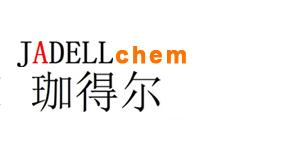Recombinant Murine Interleukin-1 alpha 是一种有效的免疫调节剂,能够介导广泛的免疫和炎症反应。
Synonyms
rMuIL-1α; Hematopoietin-1; IL1A; IL1F1; IL-1 alpha ; 重组鼠白细胞介素-1α
Species
MouseSource
E. coli Accession
P01582 Gene ID
16175 Molecular Weight
Approximately 17.9 kDa AA Sequence
SAPYTYQSDL RYKLMKLVRQ KFVMNDSLNQ TIYQDVDKHY LSTTWLNDLQ QEVKFDMYAY SSGGDDSKYP VTLKISDSQL FVSAQGEDQP VLLKELPETP KLITGSETDL IFFWKSINSK NYFTSAAYPE LFIATKEQSR VHLARGLPSM TDFQIS Biological Activity
The ED50 is <2 pg/mL as measured by murine D10S cells, corresponding to a specific activity of >5.0 × 108 units/mg. Appearance
Lyophilized powder. Formulation
Lyophilized after extensive dialysis against PBS, pH 7.4. Endotoxin Level
<1 EU/μg, determined by LAL method. Reconstitution
Reconstitute the lyophilized recombinant Murine Interleukin-1 alpha (rMuIL-1α) to 0.1-1.0 mg/mL using sterile distilled water or aqueous buffer containing 0.1 % BSA. Storage & Stability
Lyophilized recombinant Murine Interleukin-1 alpha (rMuIL-1α) is stored at -20°C. After reconstitution, it is stable at 4°C for 1 week or -20°C for longer. It is recommended to freeze aliquots at -20°C or -80°C for extended storage. Shipping
Room temperature in continental US; may vary elsewhere. Background
Interleukin-1 (IL-1) is a family of related peptides that are produced by mononuclear phagocytes and other cell types that have been stimulated by microbes or various microbial products. IL-1 has been shown to initiate or augment a number of biological responses that are proinflammatory in nature. Recombinant Murine Interleukin-1 alpha is a non-glycosylated polypeptide chain containing 156 amino acids and having a molecular mass of 17.9 kDa. Treatment with recombinant murine interleukin-1 alpha (rIL-1 alpha) significantly enhances the resistance of mice to infection by the facultative intracellular pathogen Listeria monocytogenes[1]. Members of the IL-1 family such as IL-1α and IL-1β are pro-inflammatory cytokines. Increased IL-1α and IL-1β levels have been detected separately in cigarette smoke (CS)-treated animals and inhibition of the respective signaling pathways result in anti-inflammatory activity[2]. |



